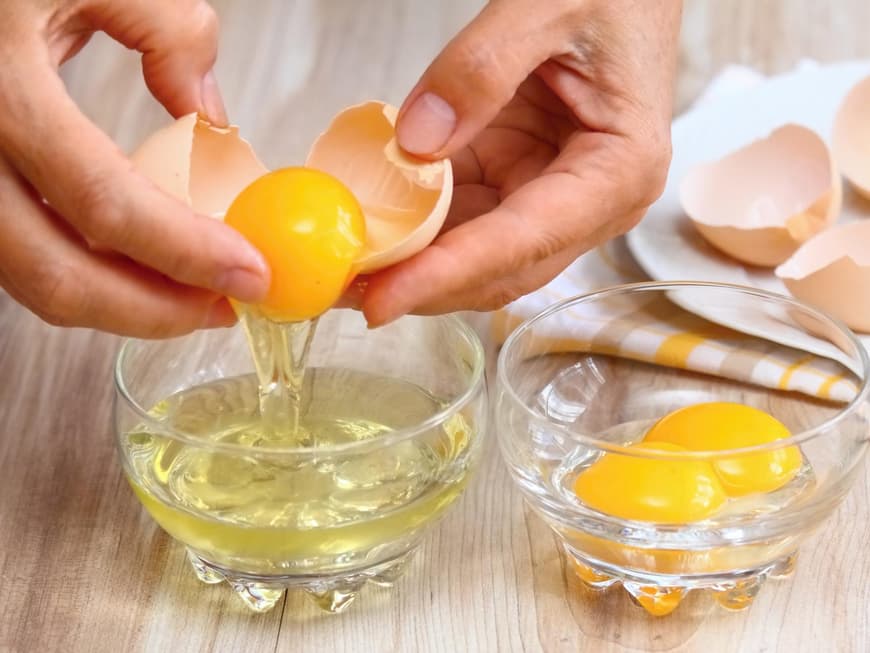
On average, we eat 235 eggs a year - and the trend is rising slightly. But they also just taste too good! Time for some insider knowledge!
Why there are white and brown eggs
This is genetically determined. You can tell what color the eggshell will be by looking at the ear discs of a chicken breed. The ear discs are lobes that lie directly behind the eyes. If they are white in a hen, she will also lay white eggs. If they are red, the hen will lay brown eggs.
How best to store them at home
Always store them separately from other foods in the fridge. To keep the yolk in the middle and the air chamber at the top, place the egg with the pointed end facing downwards. Otherwise, the air bubble will rise to the top, the egg membrane will peel off and germs will form. Stored correctly, an egg can be eaten up to 28 days after the laying date. If you are unsure whether it is still fresh: place the egg in a glass of cold water and wait briefly. If it is at the bottom, it is fresh. If it is in the middle, it is still okay. As soon as it rises to the surface: heat through at a minimum of 60 degrees.
Why we shouldn't scare them off
The water brings bacteria into the egg and reduces its shelf life. There is also no need to prick the shell to prevent the egg from bursting during cooking: add a little salt or vinegar to the water instead. This causes the egg white to coagulate at the burst point and any breakage is sealed immediately.
Why a green edge is not harmful
Does your breakfast egg have a green edge on the yolk? This is completely normal: after a long cooking time, the iron in the egg yolk reacts to the sulphur in the egg white. For us, this is absolutely harmless.
